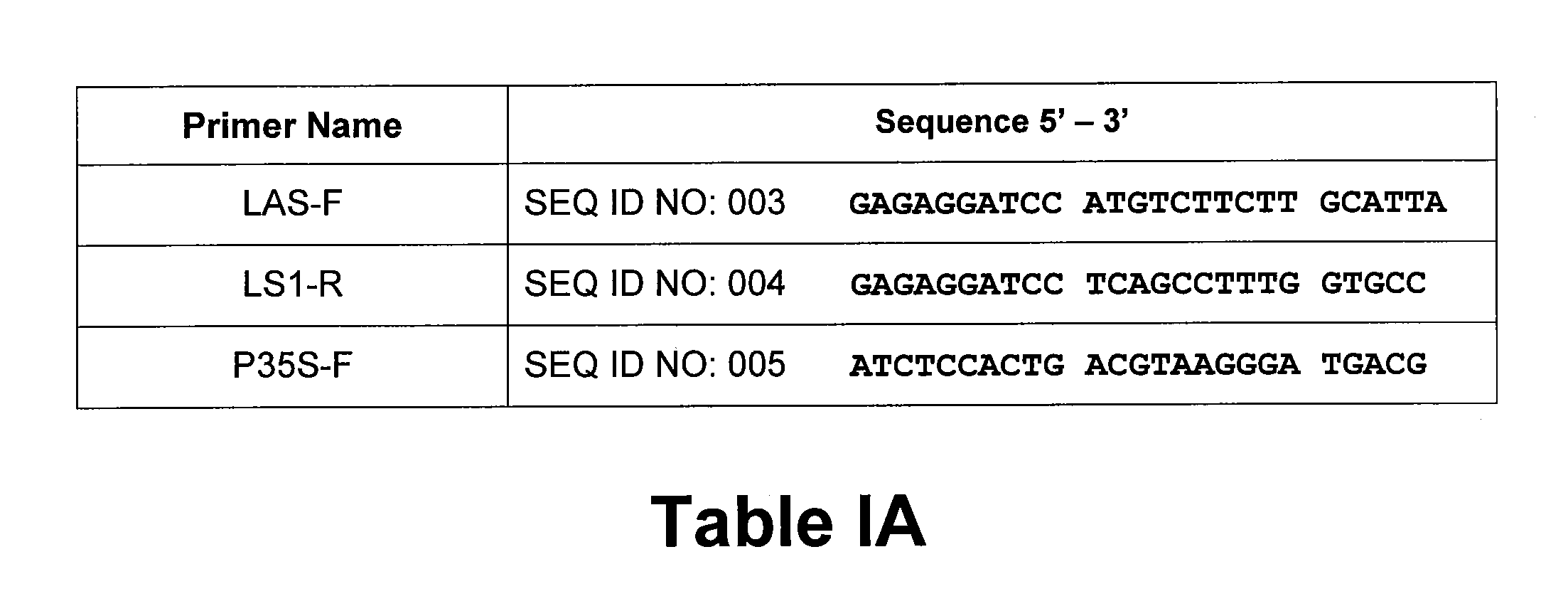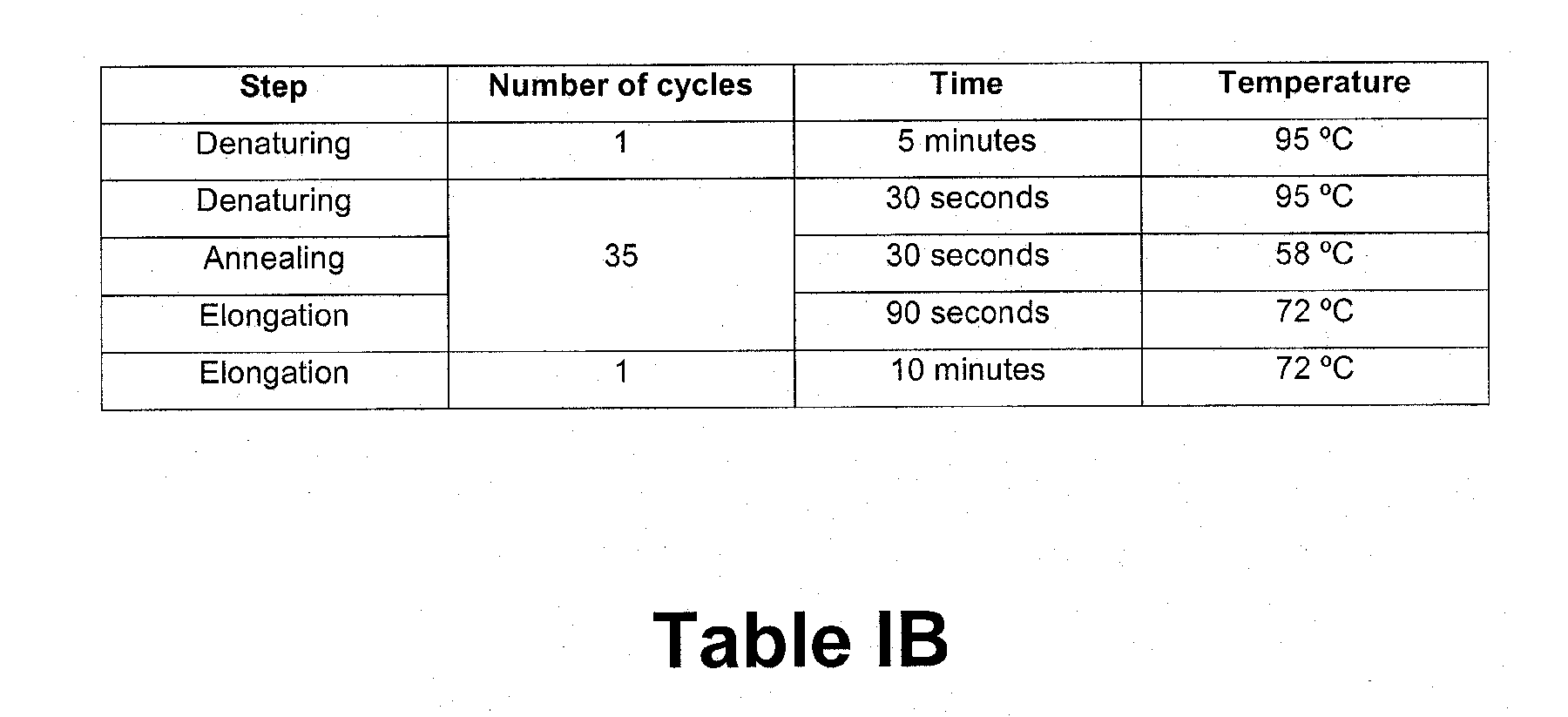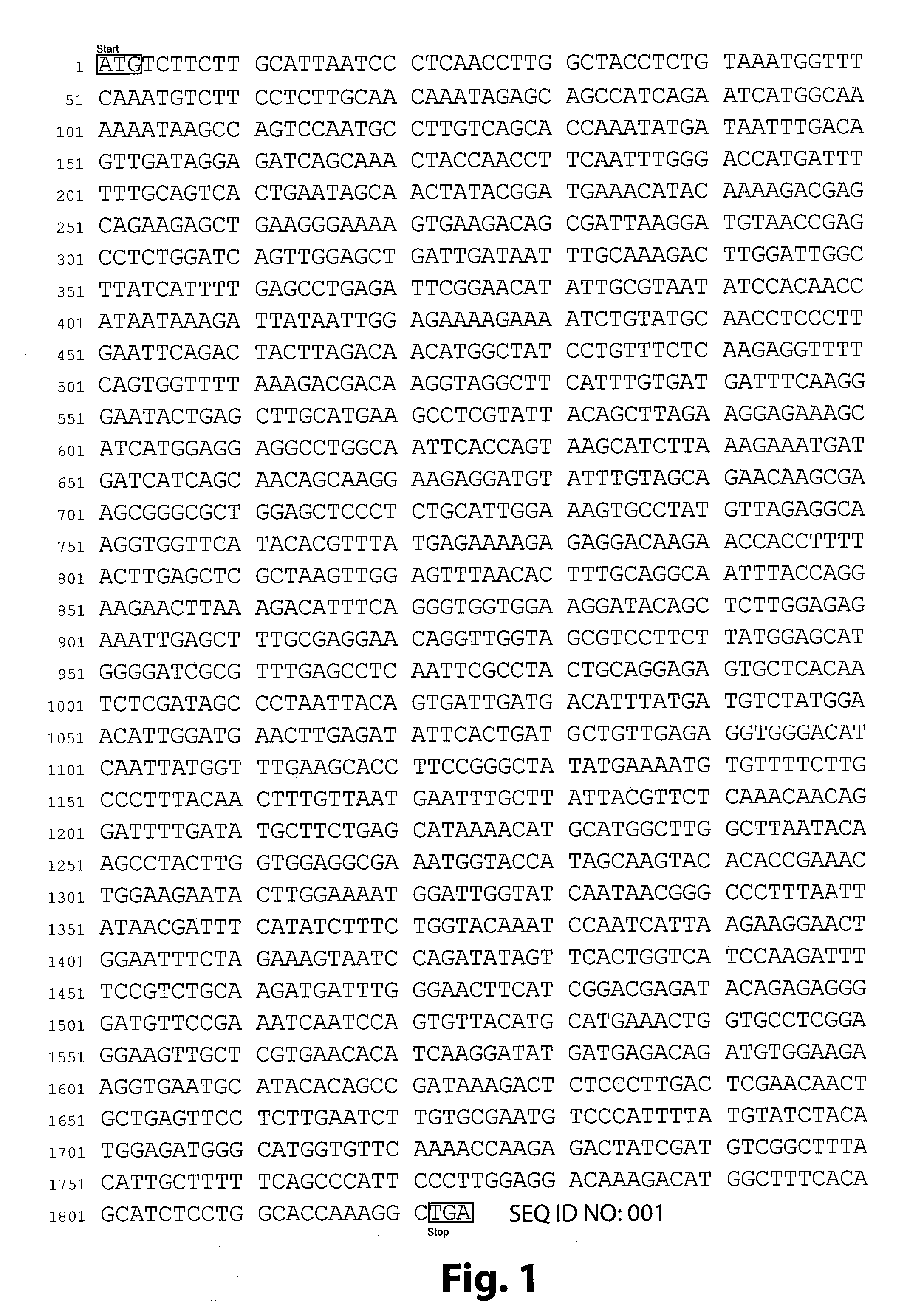Method for generating resistance against citrus diseases caused by insects, fungi, oomycetes, bacteria or nematodes
a technology of oomycetes and citrus, applied in the field of generating resistance to citrus diseases caused by insects, fungi, bacteria, oomycetes or nematodes, can solve the problems of limiting production and fruit quality in some countries, destroying millions of trees, and a serious threat, so as to maximize attributes such as productivity or vigor
- Summary
- Abstract
- Description
- Claims
- Application Information
AI Technical Summary
Benefits of technology
Problems solved by technology
Method used
Image
Examples
example 1
Construction of Expression Cassettes
[0052]Total RNA was extracted from 2 g of fruit flavedo from sweet orange, using the procedure described by Rodrigo et al. (2004) and as detailed below:
[0053]Add 10 mL of extraction buffer (200 mm Tris-HCl pH8, 400 mM NaCl, 50 mM EDTA pH8, 2% Sarkosyl, 1% PVP-40) to 2 grams of flavedo tissue, 100 μL of β-mercaptoethanol and 5 mL of phenol (balanced with Tris) in a centrifuge tube. Vortex and incubate for 15 minutes at 65° C. Add 5 mL of cloforom:isoamyl alcohol (24:1). Centrifuge at 4,500 rpm for 20 minutes at 4° C. Recover the aqueous phase into a new tube. Add again 5 mL of phenol and 5 mL of chloroform:isoamyl alcohol (24:1). Centrifuge at 4,500 rpm for 20 minutes at 4° C. Recover the aqueous phase again and transfer to a new centrifuge tube. Add 1.5 volumes of 100% ethanol, mix and centrifuge at 15,000 rpm for 15 minutes at 4° C. Remove the supernatant and wash the pellet with 5 mL of 70% ethanol (cold). Centrifuge at 15,000 rpm for 5 min at 4...
example 2
[0057]Genetic transformation of Citrus with Agrobacterium tumefaciens carrying the constructs of interest, transgene precursors of a d-limonene synthase gene in antisense and RNAi configuration. Regeneration of whole transgenic plants from transformed cells and tissues.
[0058]The genetic constructs of interest were cloned into the transformation vector pBIN 19 under the control of 35S promoter from the Cauliflower mosaic virus (CaMV) and the nopaline synthase (NOS) gene terminator. Besides the expression cassette of interest, the T-DNA contained the neomycin phosphotransferase II (nptII) transgene, which confers resistance to kanamycin to transformed cells, under the control of the NOS promoter and terminator. Plasmids of interest pBIN19 / AS and pBIN19 / RNAi were introduced into Agrobacterium tumefaciens strain EHA 105 (derived disarmed from strain A281) by electroporation.
[0059]As starting plant material we used adult sweet orange buds grafted onto vigorous juvenile rootstocks in the ...
example 3
[0062]Change in the profile of accumulation of volatile terpenes in transgenic plants.
[0063]Diverse analyses by gas chromatography—mass spectrometry of different tissues obtained from transgenic plants (leaves, petals, pulp vesicles and fruit flavedo) were conducted. The use of antisense and RNAi strategies led to generating independent transgenic lines in which a reduction in transcript accumulation of the d-limonene synthase gene and in transcripts of related (homologous) genes was observed. This led to a drastic reduction in the accumulation of enzymes with d-limonene synthase activity. In these transgenic plants, there was a decrease in the synthesis, accumulation and release of d-limonene of about 50 times less than control lines and in other monoterpenes such as sabinene, delta-3-carene, beta-myrcene, ocimene, alpha-terpinolene, limonene oxide, sabinene hydrate, linalyl propionate, perilla aldehyde, octanal, nonanal, decanal or undecanal, isopiperitenone, and sesquiterpenes su...
PUM
| Property | Measurement | Unit |
|---|---|---|
| area | aaaaa | aaaaa |
| melting temperature | aaaaa | aaaaa |
| melting temperature | aaaaa | aaaaa |
Abstract
Description
Claims
Application Information
 Login to View More
Login to View More - R&D
- Intellectual Property
- Life Sciences
- Materials
- Tech Scout
- Unparalleled Data Quality
- Higher Quality Content
- 60% Fewer Hallucinations
Browse by: Latest US Patents, China's latest patents, Technical Efficacy Thesaurus, Application Domain, Technology Topic, Popular Technical Reports.
© 2025 PatSnap. All rights reserved.Legal|Privacy policy|Modern Slavery Act Transparency Statement|Sitemap|About US| Contact US: help@patsnap.com



